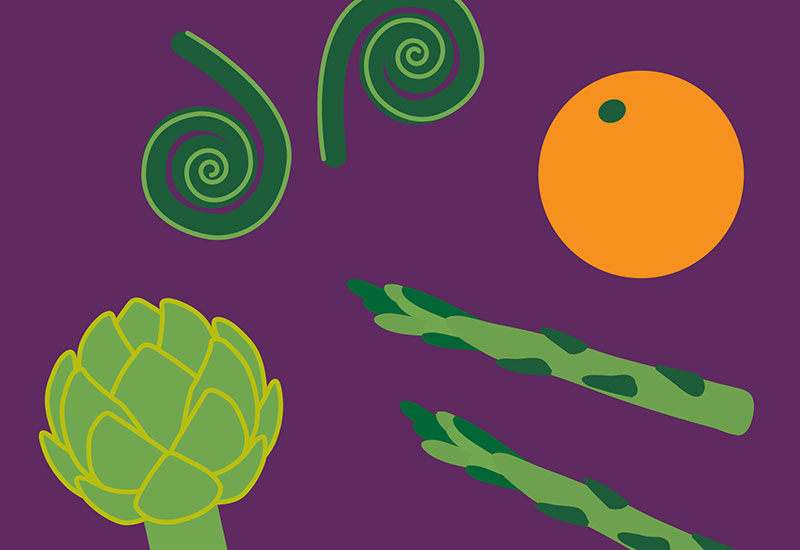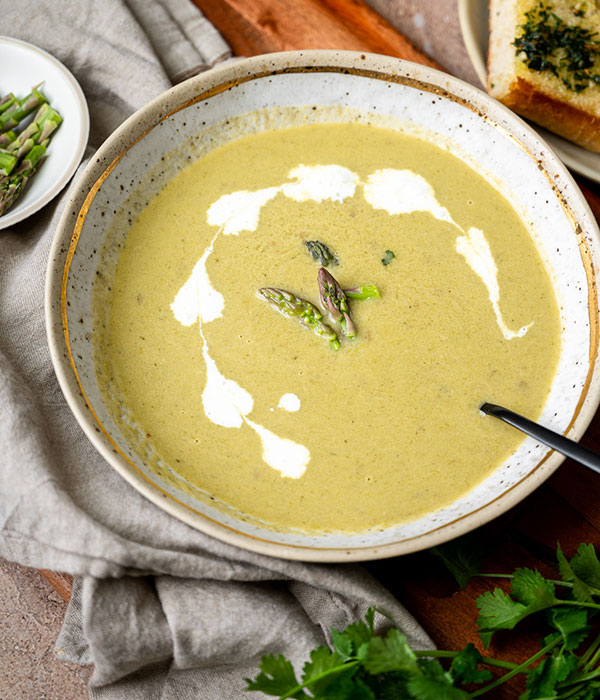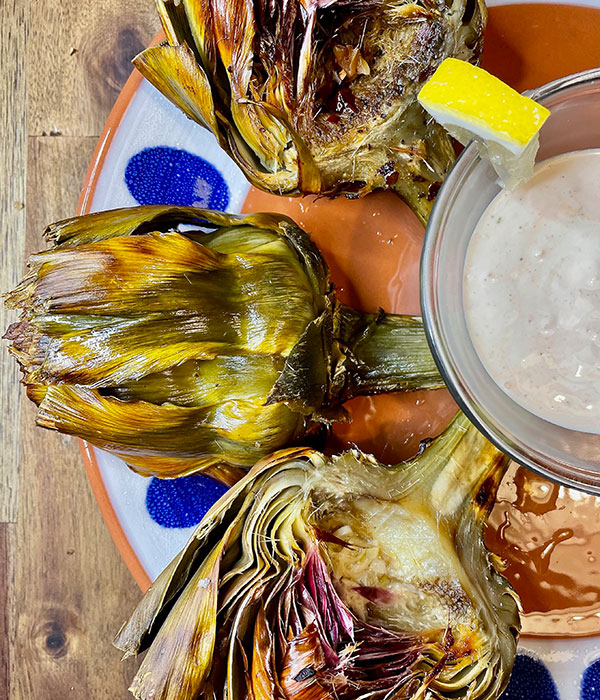6 In-Season Fruits & Veggies to Spring Clean Your Daily Diet

The following article was written by Heinen’s Chief Dietitian, Melanie Jatsek RD, LD.
Spring is upon us and with it comes the internal drive to scrub the winter grime from our windows and walls. There’s nothing like a sparkling clean home to prepare you for the sunshine and bloom ahead.
This year, I’d like to encourage you to give this same loving attention to your body because after all, it is your primary residence. Think of it as a fresh start for a new season.
Eating in season is the perfect way to treat your body to a good spring cleaning. Here are six fresh spring produce items available at your local Heinen’s to get you started.
Spinach
Chlorophyll is the primary pigment in spinach and other leafy greens. With its antioxidant, anti-inflammatory and detoxifying properties, chlorophyll has the power to fight common diseases of civilization, like heart disease and cancer.
To prepare a perfect seasonal spring salad, fill a bowl with fresh spinach and top with Ojai Pixie Tangerines, grilled asparagus and a few sautéed ramps for a real pop of flavor, or add a few heaping cups of fresh spinach to this 5-Ingredient Spinach Parmesan Pasta.

Local Wild Ramps
Ramps are an early spring vegetable native to North America. Also known as wild leeks, wild garlic or spring onions, they are a member of the allium family of vegetables and share in their abundance of the plant pigment quercetin. Quercetin works to restore normal immune function and also inhibits the release of histamines, which are chemicals that cause allergic reactions like runny nose and watery eyes. In this way, ramps can help combat seasonal allergies.
Ramps have a scallion-like white bulb extending into a red-or-purple-colored stalk topped with smooth, broad, green leaves. Like spring onions, they can be eaten raw or cooked, and from top to bulb. Their garlicky flavor becomes a little softer when they’re sautéed using grass-fed butter or extra virgin olive oil.
Serve sautéed ramps as a side dish with grilled fish or grass-fed steak.
Michigan Grown Asparagus
Asparagus probably isn’t a staple vegetable in your kitchen. But you might want to consider adding it to your list this spring because it’s loaded with important vitamins, especially vitamin K. Just one cup of cooked asparagus meets your vitamin K needs for the day, an essential nutrient involved in blood clotting and bone health.
Asparagus also happens to be rich in chlorophyll and prebiotic fiber, a type of fiber that acts like “food” to support the growth of healthy bacteria in your gut. Serve this powerful veggie alongside an Fx™-approved protein, or blend it into this refreshing Creamy Asparagus Soup. For a fully Fx™-approved version, swap the heavy cream with Heinen’s full fat canned coconut milk.

Ojai Pixie Tangerines
Sourced from our friends at Melissa’s Produce, Ojai Pixie Tangerines are California grown seedless tangerines that are among the last citrus fruits to ripen. Their extra growing time makes them extra sweet!
Because of their small size and easy-to-peel skin, Pixie Tangerines make the perfect on-the-go snack. But don’t let their size fool you! These little guys are an excellent source of vitamin C, which is powerful in reducing inflammation, strengthening the immune system and boosting collagen production within the skin.
Spring Artichokes
I think artichokes are one of nature’s most beautiful edible creations. Rich in fiber, vitamins C and K and folate, they are a member of the thistle family—a group of flowering plants characterized by leaves with sharp prickles on the margins. The fiber in artichokes is called inulin, a type of prebiotic that feeds the good bacteria in your gut. And yes, their green color is a sign of their chlorophyll-containing nature.
The many cooking methods for artichokes include baking, boiling, braising, grilling, roasting and steaming. Try this simple recipe for Roasted Artichokes with Lemon and Garlic Aioli. To make the Lemon Garlic Aioli sauce Fx™-approved, use the Primal Kitchen brand of mayo and replace the sour cream with Forager Project Unsweetened Plain Cashewmilk Yogurt.

Fiddleheads
The fiddlehead is the unfurled frond of any fern. Deep green in color and loaded with chlorophyll, these tightly coiled gems are foraged in the moist soil of boggy areas, usually below deciduous trees, wooded river bottoms and swamps. When properly cooked, they pale in color and have flavors like asparagus, green beans, mushrooms and artichokes.
Fiddleheads are rich in chlorophyll, copper, niacin (vitamin B3) and vitamins C and A.
To prepare fiddleheads, trim the woody ends and blanch in rapidly boiling, salted water. Drain and then shock in ice water to stop the cooking. Serve dressed in a vinaigrette, much as you would fresh asparagus.
Note: Fiddleheads must be thoroughly cooked before eating. Eating them raw or undercooked can cause symptoms of foodborne illness.
Key Takeaway
The cleansing power of seasonal produce is unmatched! Take advantage of Mother Nature’s brilliance this spring and unlock the peak nutrition and powerful plant chemicals hidden inside of these, and other, seasonal fruits, veggies and leafy greens available at your local Heinen’s. Your body will thank you!


